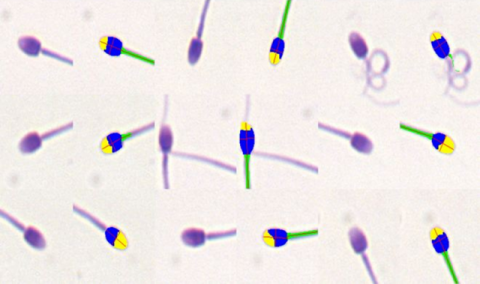Captive and wild lions in Africa: Importance to study and cryopreserve their sperm and the role of Microptic and SCA
I was meeting a group of reproductive biologists in Pretoria in 2011/2012 to discuss the importance of studying lion reproduction in more depth. One of the main reasons was that there were more lions in captivity than in the wild globally. Furthermore, every year there are less lions in the wild and among the captive and wild lions the genetic diversity becomes less. At that stage I was corresponding with Microptic S.L., Barcelona, Spain and among other aspects I mentioned this to them. Mr Jose Antonio Bellver, The General Manager of Microptic realized the importance of this and sponsored the first lion sperm trip in the North of South Africa. A small team of two veterinary surgeons, me and a PhD student then found a lion breeding farm where we had access to dart and study semen characteristics of seven lions. Fortunately they were all proven breeders (fathers). It means that if we study the sperm characteristics it will be typically representative of fertile sperm.
So how did we collect semen? After darting which rendered the lions anaesthetized for an hour we experimented with a novel new technique of urethral catherization instead of the more invasive technique of electro-ejaculation. Magically we managed to sample very high quality semen from all seven lions. Morover, we managed to setup a SCA CASA “field laboratory” See Figure). A microscope with heated stage, negative phase optics, a firewire camera and a MacBook running the SCA software in Windows under bootcamp. We managed to establish sperm concentrations instantly and study sperm motility characteristics in different media. It was indeed very simple to set the motility properties such as particle size and connectivity quickly and managed to capture all sperm successfully. This venture was very successful as a first attempt and we published a research paper on the data collected in Theriogenology.
After this initial stage the National Zoological Gardens in Pretoria, South Africa became involved and the lion programme was considerably extended and more scientists were involved. Since the first lion trip, another two lion farms were done and we now have semen characteristics of about 50 lions and also studied many facets of female reproduction. In total we have done more than a 100 lions and the long term projection is to do 600 lions in captivity in the next three years.
The ultimate aim is that once we understand all the details of sperm characteristics and cryopreservation in captive lions, to start working on wild African lions and cryopreserve sperm to develop a biobank to preserve genetic diversity as far as possible. I final step of the research will be to inseminate females with sperm from high quality males and hopefully enhance genetic diversity in wild populations.
The role of the Sperm Class Analyzer was crucial so far in assisting us to build a database of semen characteristics of the African lion and in particular, sperm concentration, sperm motility and sperm morphology (after New SpermBlue staining) using fully automated SCA CASA analysis (see Fig).








Leave A Comment